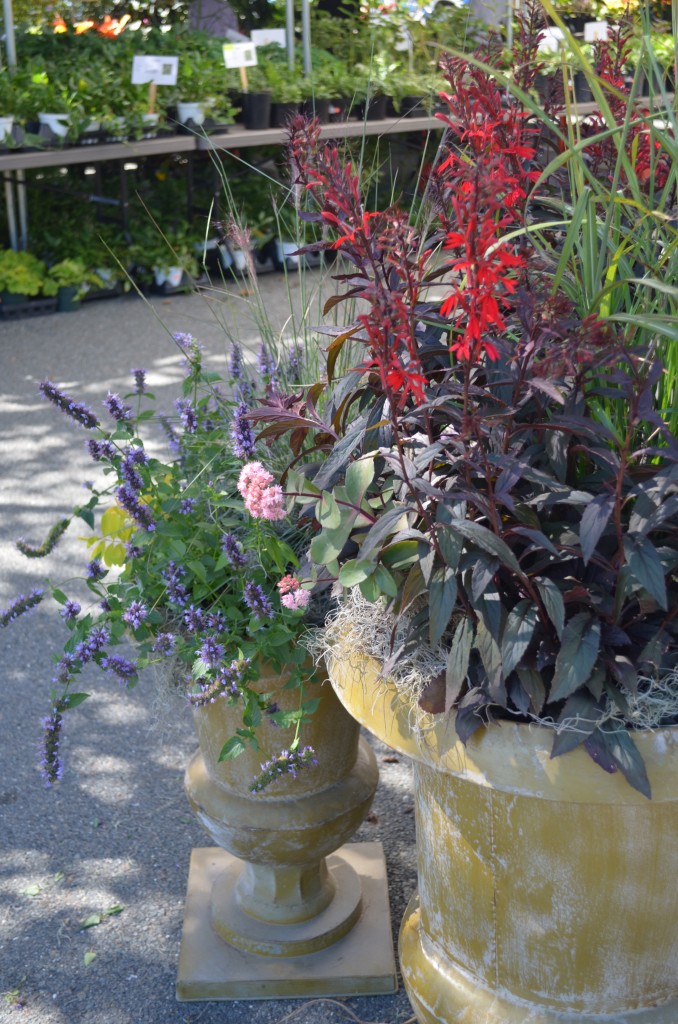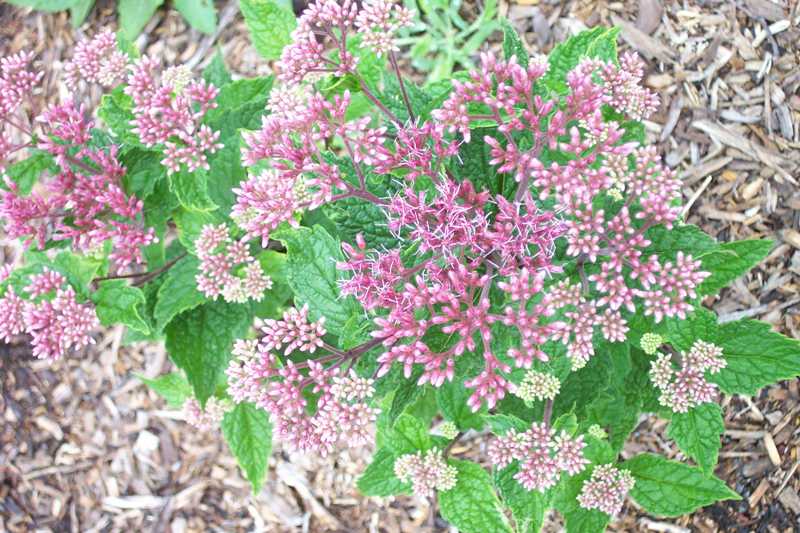Cultivars & Nativars, Oh My!
by Grace Chapman, Director of Horticulture, Lewis Ginter Botanical Garden
Did you know…..

Cardinal Flower (Lobelia ‘Black Truffle’) is a great example of a nativar that we’ll have at our plant sale. The dark foliage color makes it a favorite for rain gardens. Plus it is deer resistant, and attracts butterflies & hummingbirds.
That the word “cultivar” is an abbreviation of “cultivated variety”? It means that from the straight species , either (1) natural cross pollination, (2) natural mutation, (3) humans cross pollinating, or (4) humans genetically modifying plants, resulted in a plant looking different in some way. It might be a different flower color, better growth habit, bigger flower or leaves, different color leaves (variegation, dark purple leaves, for example).
A “nativar” is just a “native cultivated variety.” The Flora of Virginia considers a plant native to Virginia if it was naturally occurring in Virginia at the time of European contact. Everything above still applies, but this is just a marketer’s fancy way of indicating that the parents were native rather than non-native. We’ll be featuring several of these “Nativars” at our plant sale! Including the two shown.
A “nativar” is either an open-pollinated or hybridized selection from native plant parents. Nativars might have been selected because of a new leaf or flower color, a superior growth habit, interesting flower shape, or improved vigor. Nativars often have the same great qualities of their native parents- being friendly to the environment by requiring less water, fewer pesticides, and fewer fertilizers. It is important to note that nativars might not support wildlife as effectively as their native parents because their flower shapes and leaf chemistry have changed.
What are the benefits and challenges of nativars?
Benefits: Nativars often have the characteristics of native plants. They are
- Adapted to the region’s rainfall, requiring less irrigation
- Adapted to pressures of local pests and diseases, requiring less pesticides
- Adapted to the regions soils, requiring less fertilizers
Some of the challenges of nativars:
- Less genetic diversity if produced asexually- monocultures succumb to pest pressures more rapidly than diverse populations
- Uncertain ecological role in supporting wildlife
- Change in flower morphology might make nectar and pollen unavailable to native pollinators
- Flowers might be sterile, eliminating fruit
- “Pest resistant” nativars might have a different leaf chemistry from the species, causing it to be an improper host for native insects
- If selected for strength and vigor, nativars might outcompete other native plants, becoming invasive.
We’ll be featuring some great nativars at our Fall Plant Sale (that starts this Friday at 10 a.m.) Look for Threadleaf Coreopsis (Coreopsis verticillata ‘Sienna Sunset’), Sneezeweed (Helenium flexuosum ‘Tiny Dancer’), and Cardinal Flower (Lobelia ‘Black Truffle’).
Photo credit, Eupatorium ‘Little Joe’: http://www.missouribotanicalgarden.org/gardens-gardening/your-garden/plant-finder/plant-details/kc/b781/eupatorium-little-joe.aspx
